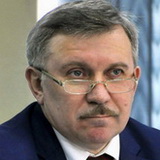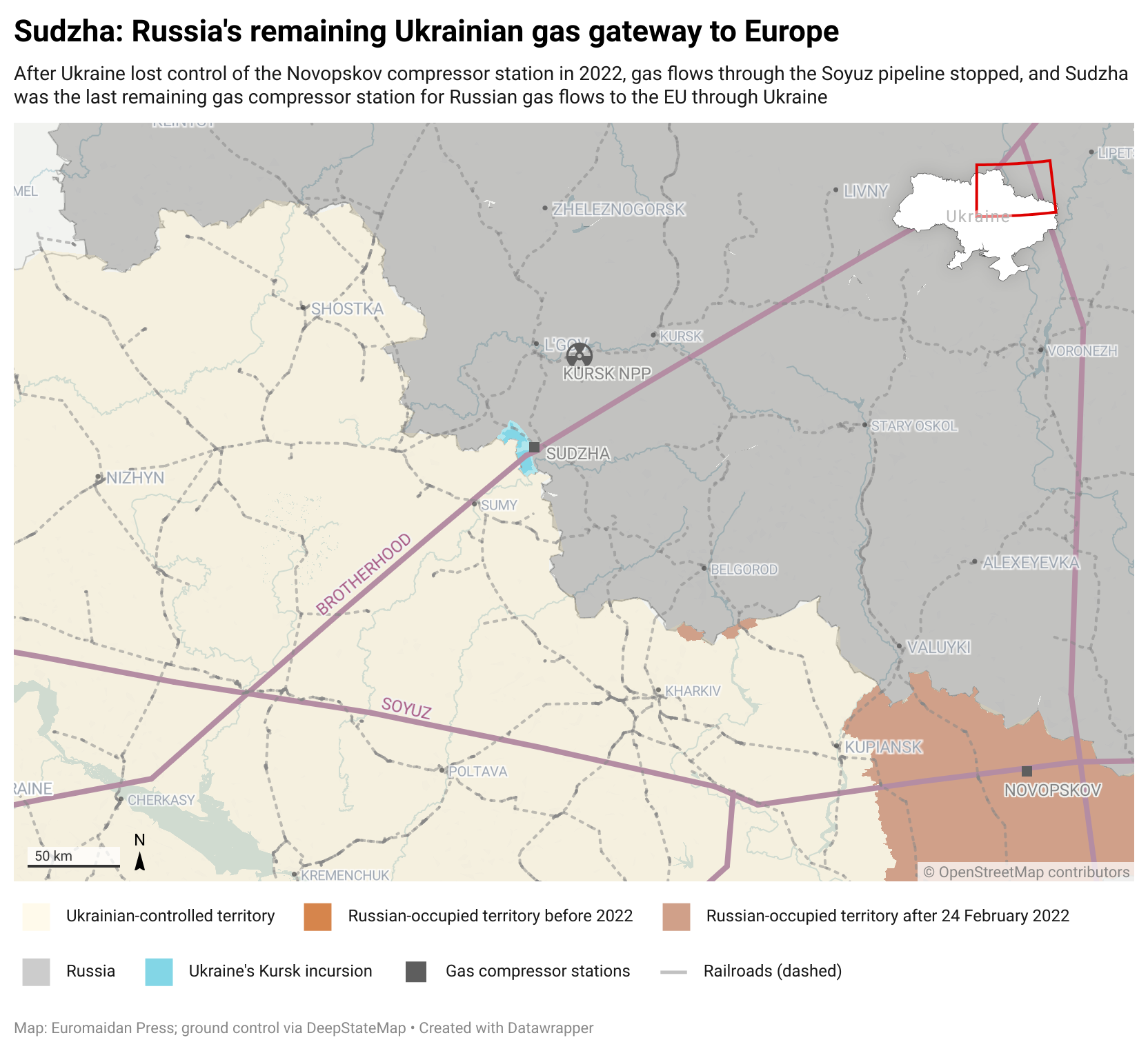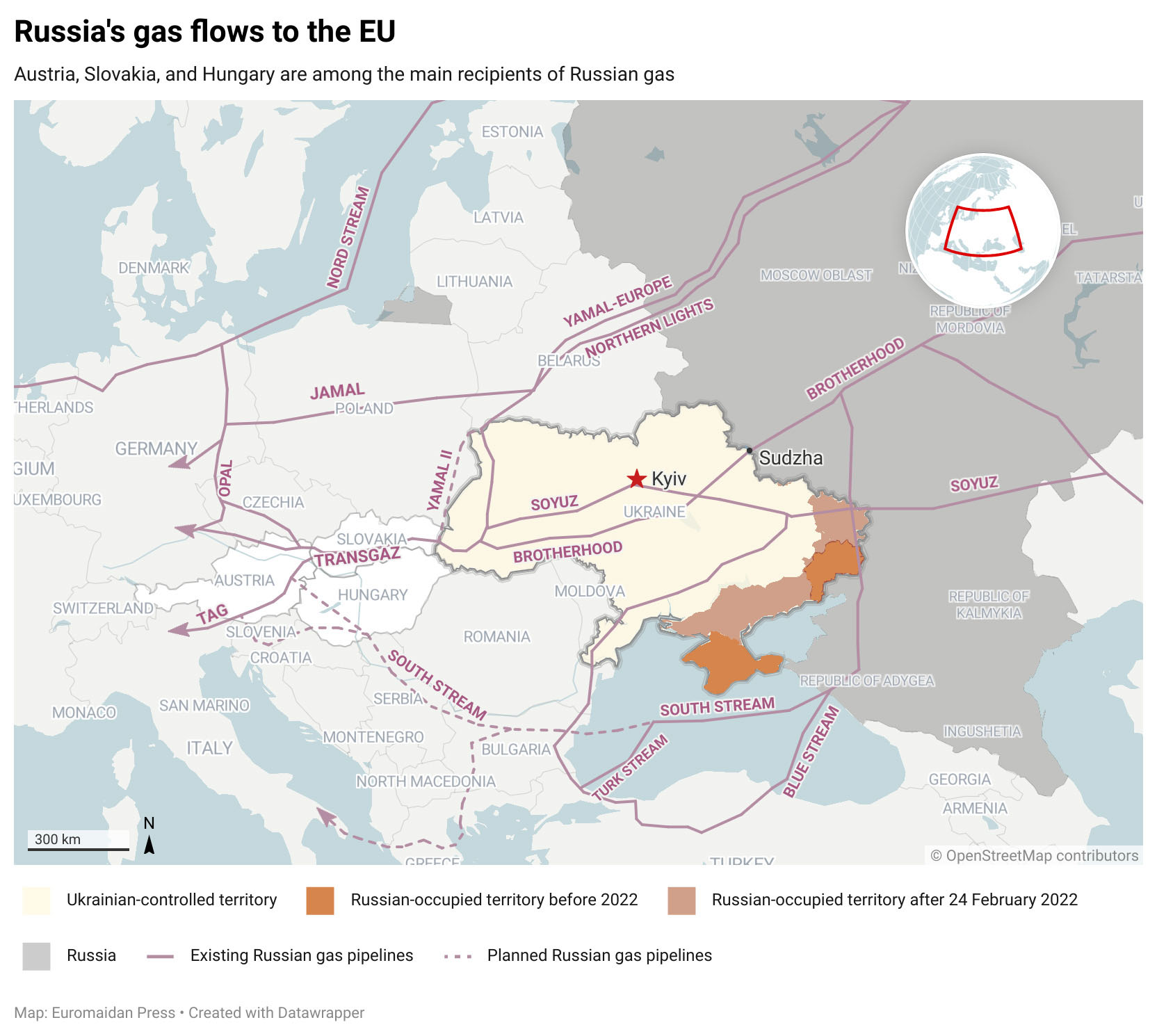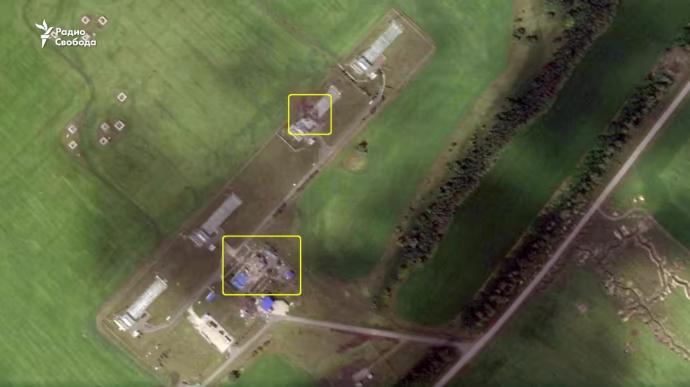Six days after Ukraine invaded Russia’s Kursk Oblast, mixed Ukrainian troops have advanced 30 kilometers across the border. Ukrainians reportedly partially control the town of Sudzha.

Sudzha serves as a gateway for Russia’s remaining gas supplies to the EU and the strategically important Kursk nuclear power plant is only 50 kilometers away.
These developments have led to much speculation about Ukraine’s possible energy policy objectives in the context of the operation and its impact on gas supplies to the EU.
We interviewed Mykhailo Gonchar, Ukrainian energy expert and President of the Centre for Global Studies Strategy XXI, to answer key questions: Would Russia stop the flow of gas through Sudzha? Does Russia still have influence over the EU in the gas sector? Could Ukraine realistically try to seize the nuclear power plant?
Sudzha: One of the last two Russian gas arteries to Europe
Sudzha, a small town in Russia’s Kursk Oblast near the Ukrainian border, has gained strategic importance thanks to its gas compressor station. This facility is a key point for the transit of Russian gas through Ukraine to Europe.
The Sudzha gas metering station is one of the main entry points for Russian gas into the Ukrainian transit system. Before the large-scale Russian invasion in February 2022, there were two main entry points for gas from Russia into Ukraine: Sudzha and Sokhranovka. However, in May 2022, the Ukrainian gas operator stopped gas supplies through Sokhranovka, citing that it had lost control of the facility due to the Russian occupation of the area. This development left Sudzha as the only remaining transit point for Russian gas flowing to Europe via Ukraine.
From 2024, around 43 million m3 will be handled in Sudzha.3 gas per day, which is about half of Russia’s gas exports to Europe by pipeline. The TurkStream pipeline covers the rest.
Following the outbreak of fighting, Moldova, one of the countries receiving gas through the Sudzha gateway, placed its gas market on high alert. However, despite these concerns, there were only minor declines in daily gas supplies and no significant problems with gas transit were encountered.

No plans to occupy the Kursk nuclear power plant
According to Mykhailo Gonchar, Ukraine never had plans to occupy the Kursk Nuclear Power Plant, although there was widespread speculation on the Internet about a possible plan to take over the plant and negotiate its exchange for the Zaporizhia Kursk Nuclear Power Plant, which has been occupied since 2022.
The power plant is located 80 km from the border, the road distance is 120 km. Gonchar argues that if Ukraine had planned to capture such a strategically important object and maintain control over it, it would have deployed much larger forces.
Moreover, he claims that if Ukraine had had such plans, it would have carried out the main surprise strike in the direction of the power plant, while other military operations would have played a secondary role.
Gonchar suspects that the real reasons for Ukraine’s unexpected invasion of Russia may be logistical rather than energetic. Railways passing through the regional railway center of Lgov deliver supplies south, where the Russian army, relying on rails, carried out an invasion north of Kharkiv in May.
By invading Kursk Oblast, Ukraine could disrupt military supplies by destroying railway infrastructure such as bridges. Even if Ukraine is forced to withdraw, the Russians will need time to rebuild and will be within firing range of Ukrainian territory, Gonchar believes.
Gazprom is unlikely to interrupt gas supplies through Sudzha
The Russian state-owned gas company Gazprom could have cut off gas supplies to the EU via the Brotherhood’s pipeline in retaliation for the West’s tacit support for Ukraine’s Kursk invasion. Russia’s loss of control over the Sudzha gas compressor station could have served as a pretext, similar to how Ukraine stopped gas production via the Soyuz pipeline in 2022 after losing control of the Novopskov gas compressor station.
However, Gonchar believes that this will not happen in the future. At the other end of the pipeline are what he calls the Kremlin’s “Trojan horses”: Hungary, Slovakia and, to a lesser extent, Austria.
“The leadership of these three countries represents a position in the EU that is as loyal to the Kremlin as possible. So even if the Kremlin probably wants to stop gas supplies, this would primarily mean punishing its own people who serve the Kremlin’s interests. That is why Russia is determined to maintain the status quo of gas supplies and ignore the EU’s statements,” argues Gonchar.

Apart from the need to supply its friendly states, Gazprom is in a difficult financial situation and is keen to return to the EU market. This is another reason why Russia is unlikely to shut off the flow through Sudzha, which could previously be considered an insignificant fuel route but currently supplies half of Russia’s gas volumes to the EU.
The Kremlin’s measures helped wean the EU off Russian gas dependence
Over the past two years, the EU has managed to radically diversify its supplies after decades of dependence on the Kremlin. However, Gonchar believes that this is not Brussels’s achievement, but rather Russia’s.
Before 2022, Gazprom supplied 46 percent of the EU’s gas needs. When the Union staunchly supported Ukraine after the Russian invasion, the Kremlin tried to use gas as a weapon to force the EU to end its support for Ukraine.
To achieve this, Russia tried to restrict the flow of gas to the EU market in order to drive up gas prices. At the height of the crisis in 2022, gas prices in the EU exceeded $3000 per 1000m3compared to the usual 300-500 USD per 1000 m3.
Russia used fabricated pretexts to reduce gas supplies to the EU market:
- Due to a conflict with Poland, Russia stopped gas supplies to Germany via the Yamal-EU pipeline. Poland was accused of arbitrarily seizing control of Gazprom’s share in its joint venture for the Polish section of the pipeline.
- The biggest blow to the EU market was the turbine drama surrounding Nord Stream’s Siemens turbines in 2022. Russia claimed that turbines at the Portovaya gas compressor station had failed, leading to a reduction in gas supplies to Germany. This claim is questionable, as the simultaneous failure of eight turbines is highly unlikely, suggesting a political rather than a technical reason for the stopped gas supplies.
The Kremlin used the allegedly broken turbines to pressure the West to lift sanctions against Russia over the war against Ukraine. This led to diplomatic tensions, and Germany asked Canada to temporarily lift sanctions to allow the turbines to be repaired.
Gonchar explains that the Kremlin’s message was essentially: “You, the West, have only yourself to blame because you imposed sanctions on us for what you consider to be an invasion of Ukraine.”
This situation continued until early autumn 2022, when Gazprom’s Western European customers faced heavy fines for breach of contract because gas supplies fell below the agreed minimum volumes.
Subsequently, a mysterious explosion damaged both the Nord Stream I and Nord Stream II pipelines. Gonchar believes this was an inside job in which Russia aimed to create a Force majeure to explain the low gas reserves.
However, all these attempts to use gas as a weapon forced the EU to break away from its dependence on Gazprom. The EU Commission failed to convince all EU members to impose gas sanctions on Russia, so the bloc took measures to drastically reduce its consumption of fossil fuels and began buying American liquefied natural gas.
“By trying to weaponise gas supplies, Gazprom has lost the EU gas market. Currently, Nord Stream I and II are not operational, nor is Yamal-Europe. Only the TurkStream branch through the Black Sea and the route through Ukraine remain, which Russia is forced to use, although it does not want to,” explains Mychailo Gonchar.
But now the Kremlin has realized that losing the EU market would be a disaster. Russia had hoped that China would buy all the gas. But then it had a rude awakening: China demanded domestic, subsidized gas prices, which led to the blockade of the Power of Siberia-2 pipeline, which became unprofitable due to Beijing’s demands.

Due to the Gazprom crisis, it is to be expected that the Kremlin will try at any cost and using all tricks to return to the EU gas market in the near future, believes Gonchar.
Related:

